Sega Master System
Top 10 Best Sega Master System Games of All Time!
Originally released in Japan as the Sega Mark III, the Master System was Sega’s second home console and conceived as a direct competitor to the Nintendo Entertainment System. Despite its technological advantages over the NES, the Master System was adversely affected by Nintendo’s licensing practices with third-party developers. Sega released an array of quality titles themselves, but their inability to win over third-parties made it difficult to win over consumers. The Master System was unable to approach the success of the NES in Japan or America, but it fared better in European and Brazilian markets due to its low price point compared to newer consoles. Sega was one of the best developers of the 1980s, and the Master System was home to many of the most underrated games of the 8-bit era.
10
Master of Darkness
1992
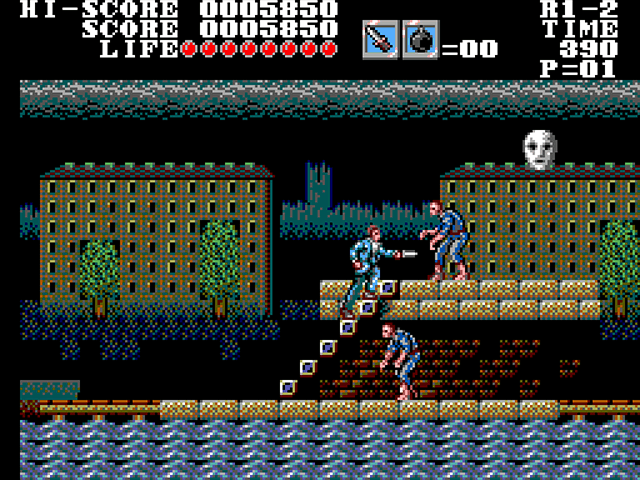
Master of Darkness is the closest thing Master System owners had to Castlevania, and the similarities between the games are quite astounding. For example, Master of Darkness requires players to battle onslaughts of bats and zombies while visiting a variety of spooky environments like cemeteries and castles. The game also contains an assortment of sub-weapons, items hidden inside of walls, and a ridiculous amount of staircases to climb. A distinct Castlevania influence can also be seen in the game’s graphics, music, and overall level structure. It’s not like Master of Darkness doesn’t bring anything new to the table, though. Instead of a vampire hunter battling Dracula in Transylvania, the game focuses on a psychologist who is battling Dracula in London. Instead of arming himself with a whip, the psychologist arms himself with a knife. (Thankfully, this knife can be upgraded to a rapier or a battle axe.) And since the game has a more contemporary setting than Castlevania does, Master of Darkness also features more contemporary weapons. Why throw a cross at someone or bombard them with holy water when you can shoot them with a handgun or throw a real bomb at them? It doesn’t earn a lot of points for innovation, but Master of Darkness is a great action/adventure game.
9
Ninja Gaiden
1990
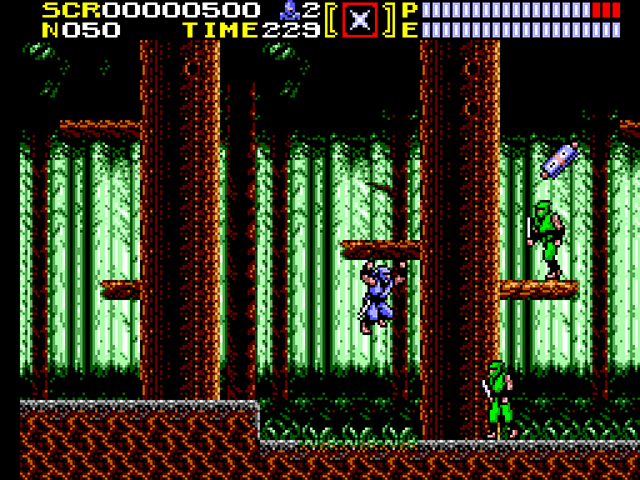
The Ninja Gaiden games rank right up there among the best action games from the 8-bit era. When people think of the series, they usually think of the NES. However, the Master System version deserves some recognition too. The gameplay in Ninja Gaiden is centered around a ninja named Ryu Hayabusa. Ryu arms himself with a sword and can also utilize a host of special weapons that includes everything from throwing stars to fire wheels. In addition to the endless hordes of enemies, the series is also well-known for tricky platforming sections. The Master System version shares many gameplay elements with its NES predecessor, but it also introduces many unique game mechanics. In the Master System version, Ryu can hang off of tree branches or ledges, and he has to bounce off of walls instead of clinging to them like a monkey. Generally speaking, the gameplay in the Master System is even faster than it was on the NES. It should be noted that Ninja Gaiden for the Master system has an entirely new storyline and features characters that are not connected to previous Ninja Gaiden games. Of course, all of the levels are completely original as well. Whether you’re venturing deep into a forest to fight a sumo wrestler, taking on a samurai warrior in Tsutenkaku, or facing off against a rock monster inside a volcano lair, the environments and scenarios are fresh and exciting. Whether or not it compares favorably to the NES classic is a moot point because fans of the genre are not likely to find a better action game on the Master System.
8
Golden Axe Warrior
1991
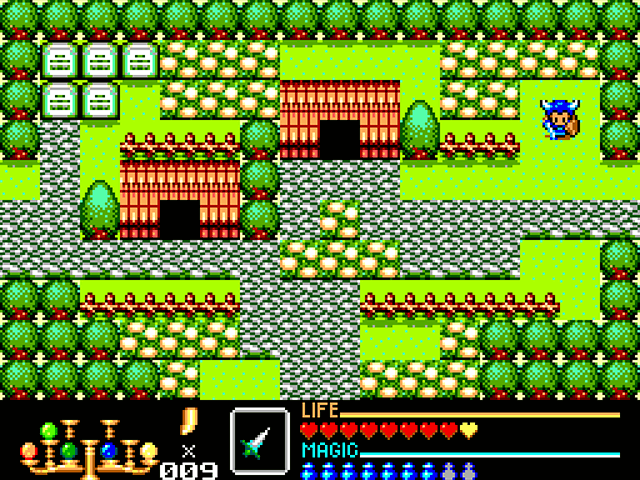
Golden Axe Warrior has more in common with The Legend of Zelda than it does with its namesake. This is all for the best, however, as an overhead adventure game was a better fit for the Master System than a hack and slash arcade game was. Like Zelda, Golden Axe Warrior features a vast overworld, nine underground labyrinths, and a variety of items to help players progress. During the game, you’ll light up dark rooms with a torch, use a magic rope to climb up mountains, and freeze lava by ringing an ice bell. You’ll also find special shoes to increase your speed, a magic balloon that will give you a bird’s eye view of the world, and a canoe that will allow you to travel across rivers. So how does Golden Axe Warrior compare to Nintendo’s classic, you ask? The gameplay isn’t as tight, the music isn’t as good, and it certainly isn’t as innovative. However, the graphics were vastly superior and the story was a little more fleshed out. It’s not as though every aspect of Golden Axe Warrior borrows from Zelda either. For instance, the game features a handful of magic spells and gives the player the ability to chop down trees with a battle axe. The game also requires players to maintain their weapons and armor with magic oil in order to prevent them from rusting. It’s obviously not the most original game on the Master System, but Golden Axe Warrior is worth checking out. It may be a shameless Zelda rip-off, but at least it’s a good one.
7
Buggy Run
1993
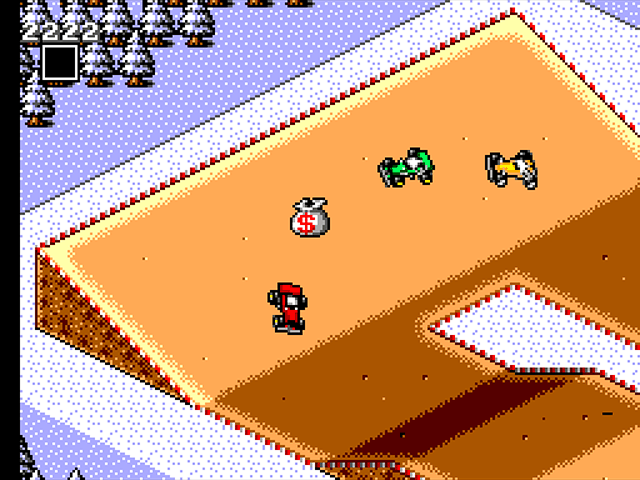
Buggy Run is an isometric racing game in the spirit of RC Pro-Am, but it’s even better in many regards. The tracks aren’t overly lengthy, but they are loaded with hills, jumps, banked corners, and sharp turns. There are also several obstacles to avoid – including water puddles, gravel beds, and an inordinate number of tornadoes. The racers themselves can also contribute to the chaos by dropping mines on the course. As you progress through the game, players have the option of upgrading their engine, steering, transmission, and tires. There are several different upgrades available in each category, so you have to be mindful of how you spend your prize money. If you bypass the first upgrades available to you in favor of saving money towards a better upgrade, you may find it difficult to win races and, thus, you’ll end up earning less prize money in the process. In addition to the standard championship races, Buggy Run features a host of multiplayer options. For the two-player modes, the game abandons the isometric viewpoint in favor of an overhead view. This effectively gives both players an optimum view of the action at all times. If players get bored of racing against each other, they also have the option of competing in the game’s “battle mode.” The goal in this mode is to knock your opponents into a bed of lava that surrounds the course. The battle mode doesn’t have a lot of depth, but it’s a fun diversion nevertheless. It’s hard not to be impressed with how full-featured Buggy Run is. It’s the best racing game on the Master System by a huge margin and another one of those hidden gems that nobody seems to know about.
6
Sonic the Hedgehog 2
1992
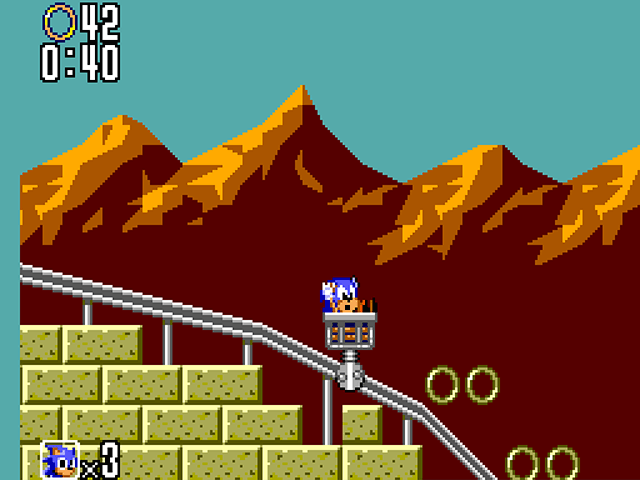
Although Sonic the Hedgehog is more closely associated with the Genesis, the series also made its mark on the Master System. Having said that, Sonic 2 is widely regarded as one of the best Genesis games of all time, and the Master System can’t quite live up to the same standards. The graphics weren’t nearly as good on the Master System, Sonic’s “spin dash” maneuver was nowhere to be seen, and Tails no longer followed Sonic through the levels. Comparing it to the Genesis version really isn’t appropriate given that the Master System version is an entirely new game designed from the ground up with the console in mind. This isn’t to say that there aren’t similarities between the versions. After all, both games involve running around in loops and jumping off of springboards, and both games are largely based on speed. However, the Master System version contains 21 entirely new stages and introduces a few new gameplay concepts to the series. The ability a ride in a mine cart or take to the skies with a hang glider really helps Sonic 2 stand out from other games in the series. The first Sonic game on the Master System also deserves to be mentioned here, but Sonic 2 offered a little more variety.
5
Power Strike II
1993
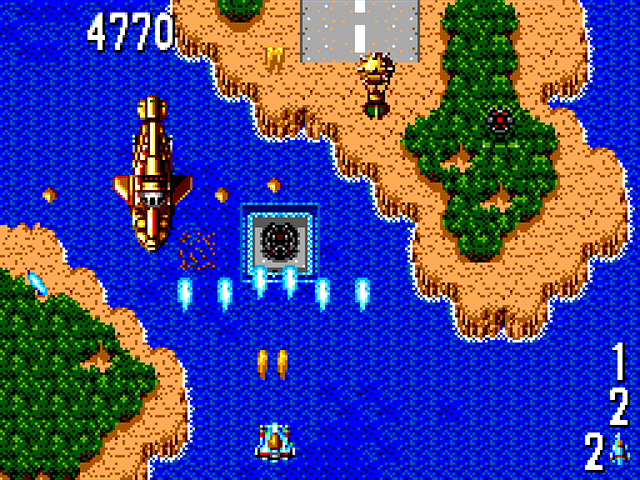
Power Strike II is the finest shoot ’em up on the Master System, but few people realize it. The game arrived very late into the Master System’s lifespan and wasn’t even released outside of Europe. The game is extremely rare, and it’s a shame that more people haven’t had the opportunity to play it. Compile really pushed the console to its limits, and Power Strike II is arguably the best-looking Master System game of all time. The stages in Power Strike II move along at a rapid rate and the screen is almost always filled with enemy fighters. No matter how hectic things get, players never have to concern themselves with slowdown or sprite flicker. The game is extremely challenging, but it isn’t as ridiculously difficult as the first Power Strike was. Like in most Compile shoot ’em ups, Power Strike II features a plethora of power-ups for players to obtain. In addition to the upgradable default weapon, players can pick up seven different secondary weapons. Remarkably, these secondary weapons can also be upgraded six times. Players also have the new ability to charge up a super attack and release it at their discretion. You’re not likely to find many 8-bit shooters that look or play better than Power Strike II does. In fact, Power Strike II compares favorably to many 16-bit shooters. It’s not an easy game to find, but no Master System collection would be complete without it.
4
Land of Illusion starring Mickey Mouse
1992
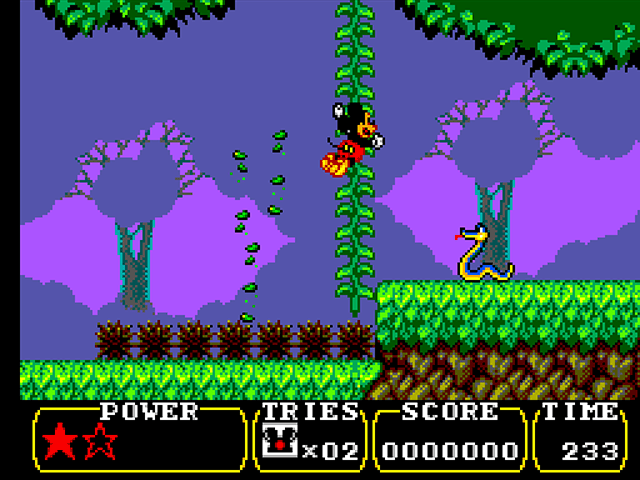
While Castle of Illusion was a great game in its own right, the Master System version was clearly inferior to the Genesis version. With Land of Illusion, Sega opted to create an entirely new game specifically with the Master System in mind. There were a lot of great Disney platformers in the 8-bit era, and Land of Illusion is right up there with the best of them. It goes without saying, but it’s always nice to see familiar Disney characters. (Horace Horsecollar even makes an appearance!) Although the game makes good use of the Disney license, it doesn’t completely rely on it. The game features a variety of colorful environments and challenges the players with interesting obstacles. The platforming aspects of the game are top notch, and it will require a lot of skill to master some of the trickier sections. With only 14 stages, Land of Illusion isn’t exactly the longest game in the world. However, what it lacks in length, it more than makes up for in variety. Throughout the game, you’ll carry around lanterns to light up dark areas, use a shrinking potion to access confined spaces, and gain the ability to climb up walls. Some stages even take place on multiple planes and require you to move around in the background layer. Naturally, there are also plenty of secret areas and hidden items to find. The level design is superb, the characters are charming, and the gameplay is varied. It may not be the most obvious choice, but Land of Illusion stands as the best platformer on the Master System.
3
Phantasy Star
1988
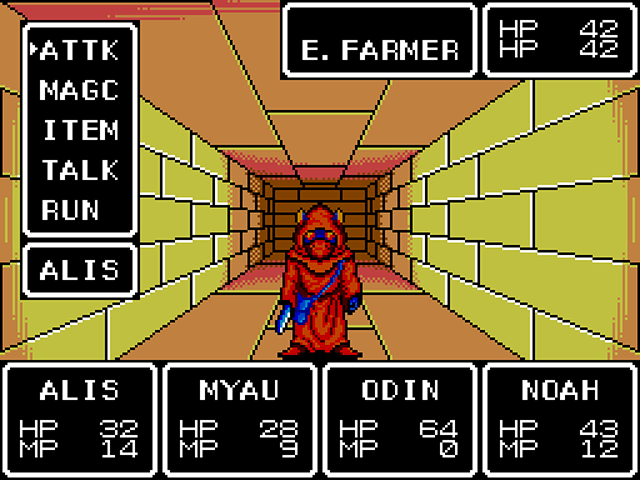
Today, role playing games are extremely common and often top sales charts. Back in 1988, the genre was still a great unknown for most gamers. Phantasy Star was the first high profile turn-based RPG released in America – beating both Dragon Warrior and Final Fantasy to the market. At a hefty four megabits, the game was much larger than most games of the era and even featured a battery backup to save your progress. The adventure is set in a futuristic world that blends sci-fi and fantasy elements together, and it involves four brave adventurers hopping from planet to planet in their quest to take down an evil intergalactic dictator. The game is somewhat cliché by today’s standards, but back in 1988 even simple things like buying new equipment, gaining experience, and recruiting new party members felt fresh and exciting. Not only did Phantasy Star introduce gamers to many fundamental RPG elements, but it executed many of the genre’s conventions better than most other RPGs of the time did. Specifically, the battle scenes contained detailed backgrounds and *gasp* enemies that were actually animated! Additionally, the cinematic cutscenes help flesh out the story and the incredible visual effects in the first-person 3D dungeons were way ahead of their time. Phantasy Star was one of the most ambitious games of the 1980s and an early standout in the RPG genre.
2
Bubble Bobble
1991
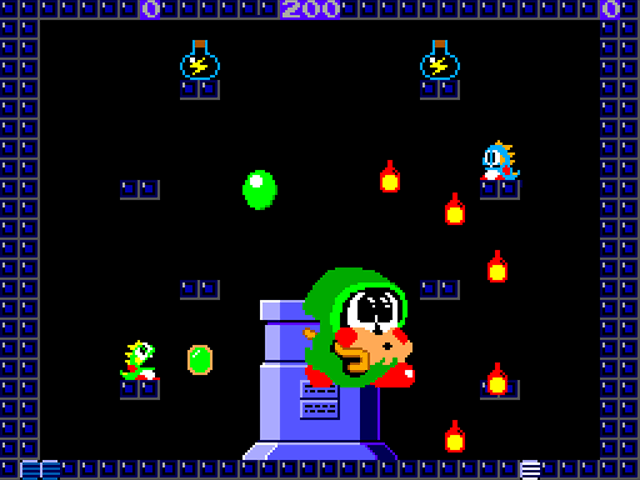
Two bubble-blowing dragons, 200 stages, and one 30-second music track stuck on repeat: that’s basically Bubble Bobble in a nutshell. The entire game consists of two dragons who jump around and trap a variety of monsters in bubbles. It’s simplicity at its finest. Bubble Bobble was one of the most iconic arcade games of the ’80s and one of the best co-op games of all time. The game has been ported to over two dozen gaming platforms thus far, and its legacy transcends time. Bubble Bobble for the Master System was an especially accurate port of the original arcade game, and it allowed for advanced strategies from the arcade game that weren’t always accurately translated in other ports. For example, the game allows players to trap enemies in bubbles when they are directly in front of them and almost at contact distance. This technique (which is often called “kissing”) was not possible in the NES or 1989 PC versions of the game. The Master System version also featured two new bosses that weren’t in the arcade original. There were no shortages of arcade ports on the Master System, but none were as faithful or as timeless as Bubble Bobble.
1
Wonder Boy III: The Dragon’s Trap
1989
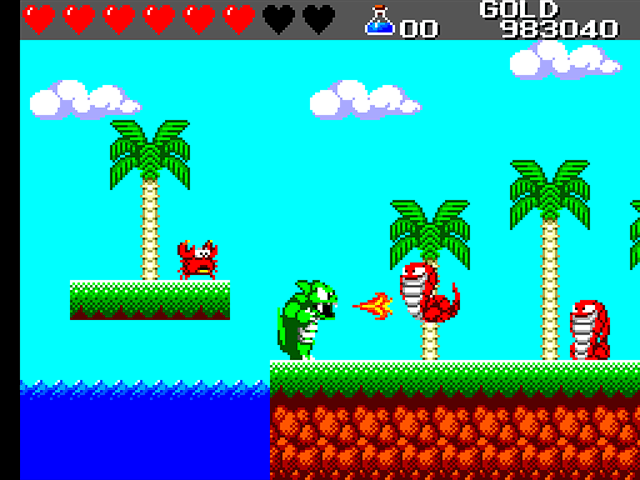
As the first Wonder Boy developed specifically for home consoles, The Dragon’s Trap is more open-ended than its predecessors and has a heavy emphasis on exploration. The game contains many RPG elements – including the ability to upgrade your equipment or increase your health. Perhaps the best aspect of the game is the transformation theme. After our beloved hero is cursed by an evil dragon, he’s transformed into a fire-breathing lizard. In his quest to become human again, he will fight several more dragons and fall under several more curses. Each curse brings with it special abilities that are used to reach new levels. When you’re a mouse, you’ll have the ability to scale certain walls and fit into enclosed spaces. As a lion, you’ll have an easier time dealing with enemies. In the form of a piranha, you’ll have enhanced swimming capabilities and, naturally, the hawk form grants you flying capabilities. These forms add a lot of variety to the established series, and they’re so much fun that you’ll wonder why you want to break the so-called curses in the first place. Wonder Boy III is the best game in the series and the greatest Sega Master System game of all time.

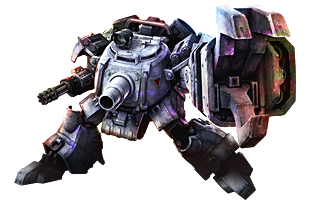
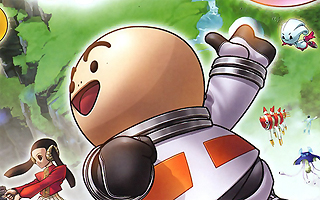
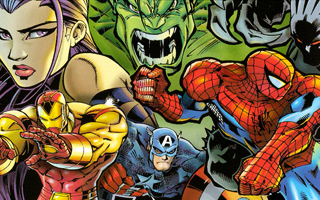
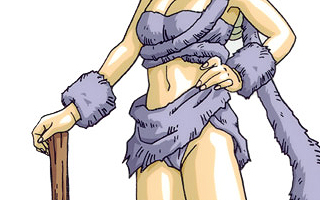
Do you agree with this list? Let us know what you think by leaving a comment below. Your opinion matters!